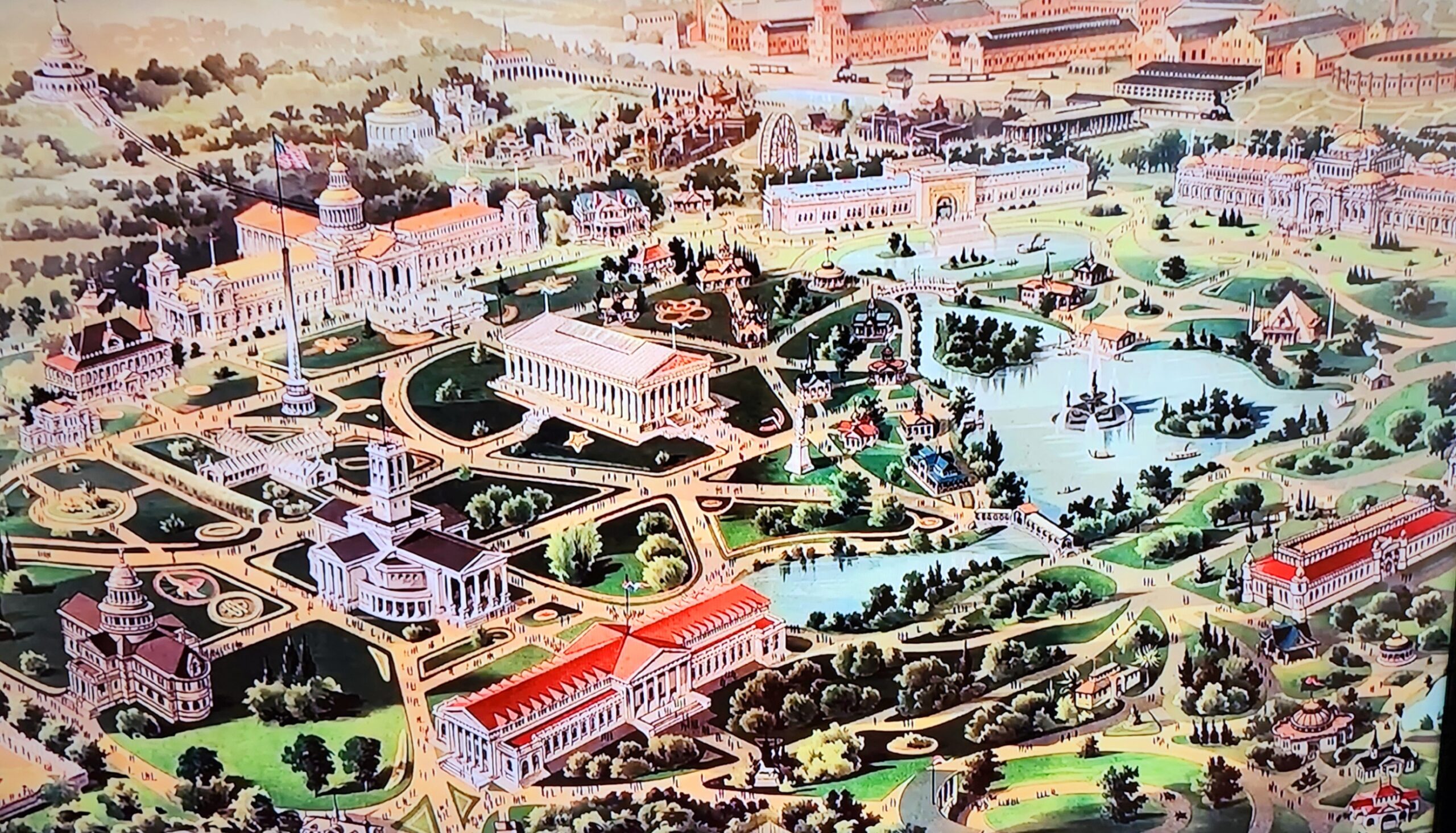About The Tennessee Centennial Exposition
In 1897, Nashville played host to the magnificent Tennessee Centennial Exposition, marking the state’s centennial anniversary. This event stood as one of the most prominent in a succession of industrial fairs that symbolized the prosperity and industrialization of the burgeoning New South.
Taking inspiration from the famed 1893 World’s Fair in Chicago, the Nashville exposition proudly presented the state’s advancements in sectors like industry, agriculture, commerce, and transport. It also shone a light on Tennessee’s educational progress and cultural accomplishments.
Though initially scheduled for 1896 to coincide with the actual centenary, the exposition opened its gates on May 1, 1897. Over its six-month run, the fair drew in a crowd of over 1.6 million visitors, celebrating Tennessee’s 100 years of statehood in grand style.
About the Award Medals of 1897 Tennessee Centennial Exposition
At the 1897 Tennessee Centennial Exposition, a range of gold, silver and bronze award medals were issued to honor and recognize exhibitors for their contributions to various fields, such as agriculture, industry, arts, and science.
According to our research & reading of the report of Gardiner G. Hubbard, Commissioner of Awards of the Tennessee Centennial Exposition 1897 , the following charts shows the number of medals given in each category by the distinguished juries for field. As you can see on the Award Chart below, a total of only 45 gold medals, 204 Silver medals, and 341 Bronze medals were awarded at the Tennessee Centennial Exposition 1897.
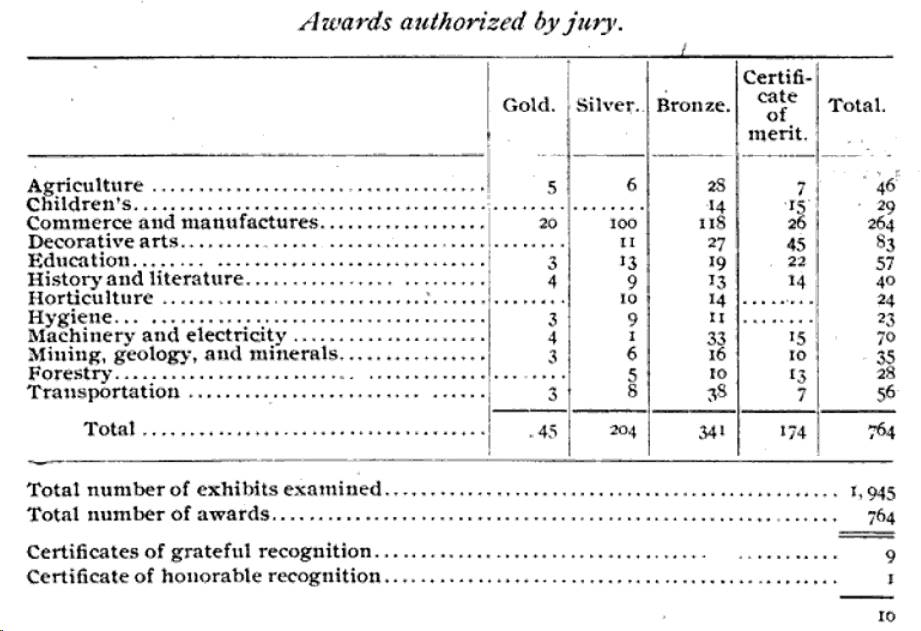
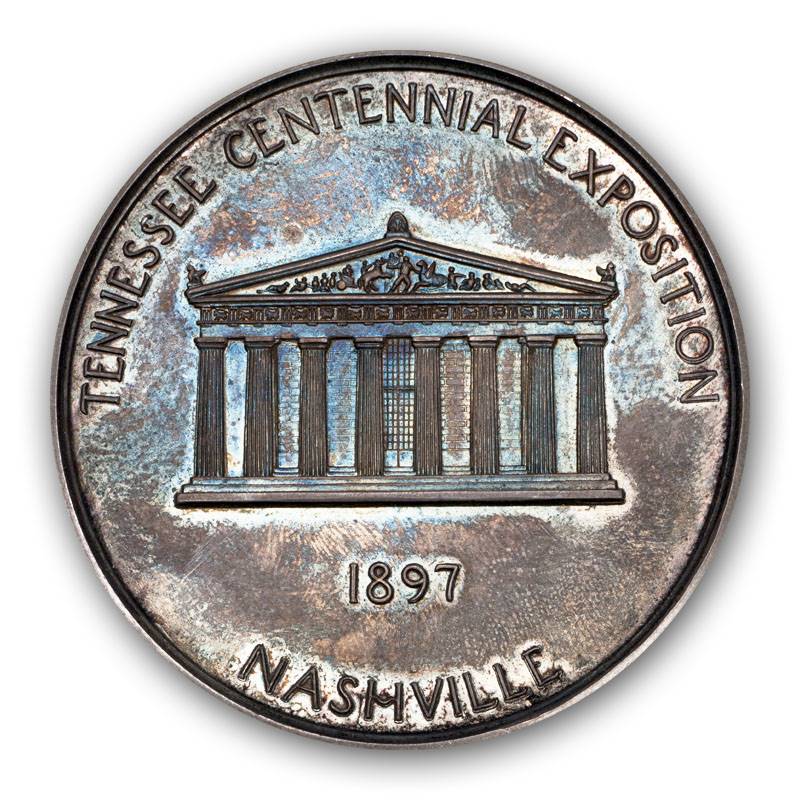
Award Medal Tennessee Centennial Exposition
Diameter 54mm. Artist: Stief
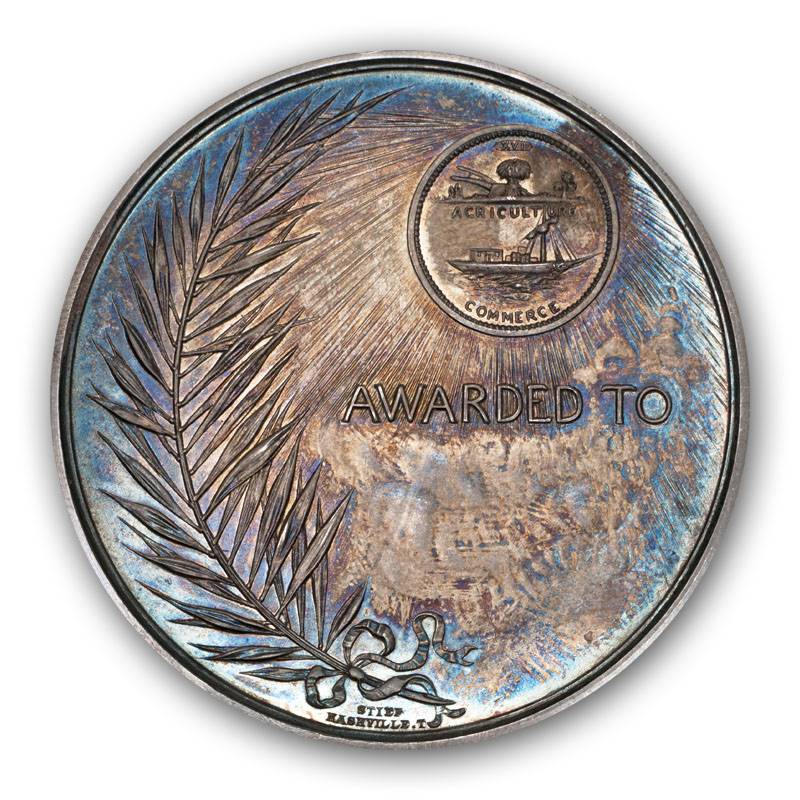
Award Medal Nashville Exposition 1897
Reverse. Unawarded. Tennessee state seal in upper right.
Collectors Comments: Because of the limited numbers issued, these are rare award medals.
GIANT SEESAW Souvenir Medal
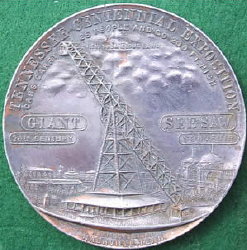
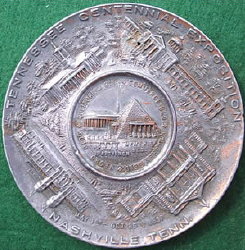
GIANT SEESAW MEDAL – TENNESSEE CENTENNIAL EXPOSITION OF 1897
A lead-alloy medal, formerly bronzed Diameter: 76mm
Obv: a view of the Giant Seesaw, the base of which in high relief, GIANT SEE-SAW 20TH CENTURY SOUVENIR each side, CARS CARRY 25 PEOPLE AND GO 200 FT HIGH above, VIEW FROM CLOUD LAND in clouds, at top TENNESSEE CENTENNIAL EXPOSITION, in exergue MAY 1 – OCT 30 1897 NASHVILLE, TENN.
This medal from the 1897 Tennessee Centennial Exposition is very interesting. It features a detailed image of an engineering marvel of the time, prominently displaying what appears to be a large seesaw or teeter-totter. The presence of the seesaw at the exposition might symbolize the balance of innovation and tradition, or possibly the industrial progress the South was experiencing during this era. Seesaws were not just playground apparatuses but also mechanical levers, a fundamental device in engineering, and their depiction here may underscore the fair’s celebration of technological achievement and mechanical prowess.
The text “TENNESSEE CENTENNIAL EXPOSITION” surrounds the top half of the medal, with “GIANT SEE-SAW” clearly inscribed across the center, pointing to this feature as a noteworthy attraction. The city name “NASHVILLE” is featured at the bottom, denoting the exposition’s location.
The presence of the seesaw, zn actual attraction at the exposition, served as a symbol of fun and ingenuity, possibly drawing large crowds much like the Ferris wheel did at the 1893 World’s Columbian Exposition in Chicago. Such mechanical novelties were common at fairs and expositions during this period as demonstrations of human ingenuity and engineering.
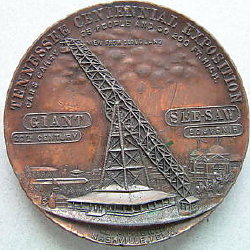
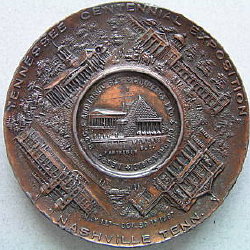
Reverse: Diameter: 76mm, both medals are same size.
The reverse side of the this medal from the 1897 Tennessee Centennial Exposition features an intricate and detailed birds-eye view of the exposition grounds, showcasing the layout of the various buildings and pavilions. The central focus is a prominent structure, possibly one of the key buildings such as the Parthenon replica, which served as the focal point of the exposition.
Surrounding the central image is a series of miniature depictions of other buildings and attractions that were present at the exposition, each meticulously rendered to highlight the architectural diversity and the grand scale of the fair. The text along the upper half of the medal reads “TENNESSEE CENTENNIAL EXPOSITION,” and the lower half includes the location and date, “NASHVILLE TENN. 1897,” establishing the medal’s commemorative nature.
The deep relief and fine detail of the medal would have required skilled craftsmanship and suggest that these medals were made to be lasting souvenirs of the exposition, celebrating the achievements and memories of the occasion. The reverse design not only commemorates the event but also serves as a historical record of the exposition’s grandeur and scale.
Special Attractions Were at The Tennessee Centennial Exposition
The 1897 Tennessee Centennial Exposition, like many world’s fairs of the era, was a venue for showcasing a variety of innovations, cultural exhibits, and special attractions. While specific records of new products and attractions introduced at the exposition might require detailed historical research, world’s fairs commonly featured the following:
Replica of the Parthenon: One of the most memorable attractions was a full-scale replica of the Parthenon in Athens, which was constructed to emphasize Nashville’s reputation as the “Athens of the South.” This structure, made permanent after the exposition, stands today as an art museum.
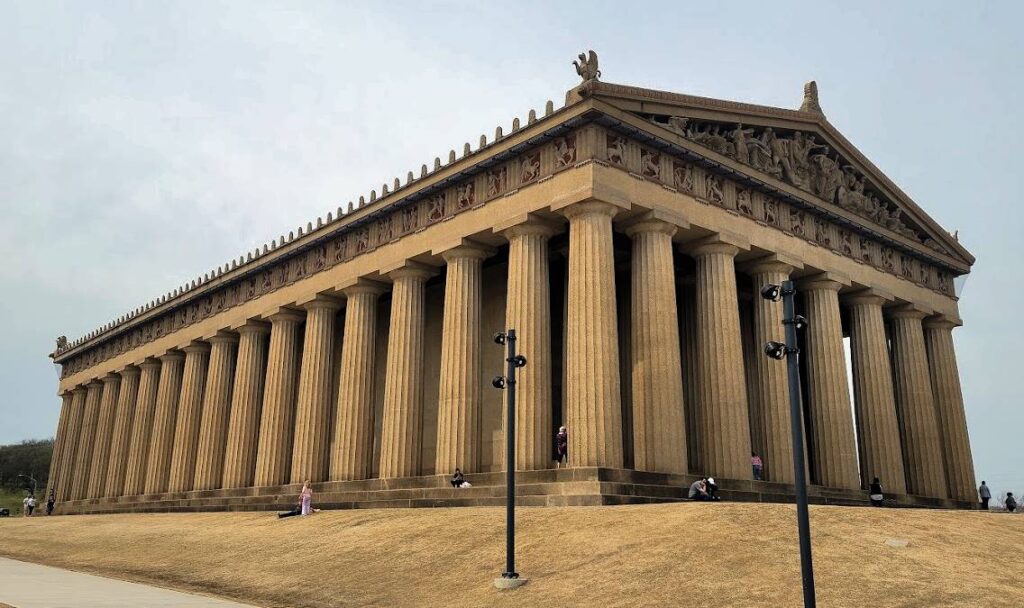
Technological Advances: The exposition likely featured new technological advancements of the era. This could have included the latest machinery, agricultural equipment, or household appliances.
Cultural Exhibits: These expositions typically offered a range of cultural exhibits showcasing the arts, music, and traditions from various regions and countries.
Amusements: The exposition would have had an amusement area with rides and games, often one of the most popular attractions for visitors. The Giant See Saw pictured on the medal is one such attractions.
Educational Displays: There may have been exhibits on advancements in education, including the latest teaching methods and educational materials.
Special Presentations: Lectures, concerts, and performances would have been scheduled, featuring notable figures and entertainers of the time.
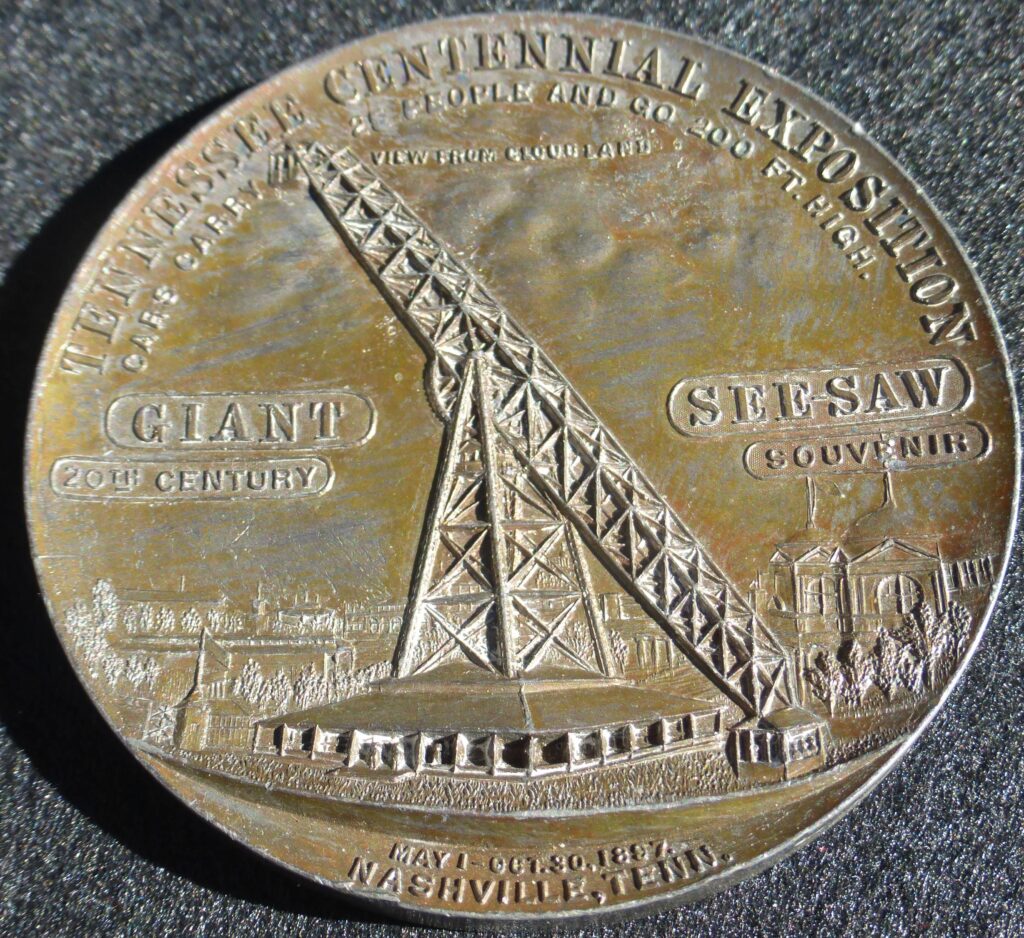
Notable People at Attendance
The 1897 Tennessee Centennial Exposition was visited by numerous dignitaries and notable figures of the time. While records from the event might provide a more comprehensive list, some of the well-documented attendees included:
President William McKinley: He honored the exposition with his presence, which was a significant endorsement and attraction for visitors.
John Philip Sousa: The famous composer and conductor performed at the exposition with his band, providing musical entertainment that was a major draw for attendees.
It’s also likely that other political figures, industry leaders, cultural icons, and celebrities of the era visited the exposition, as such events were important social and cultural gatherings of the time.
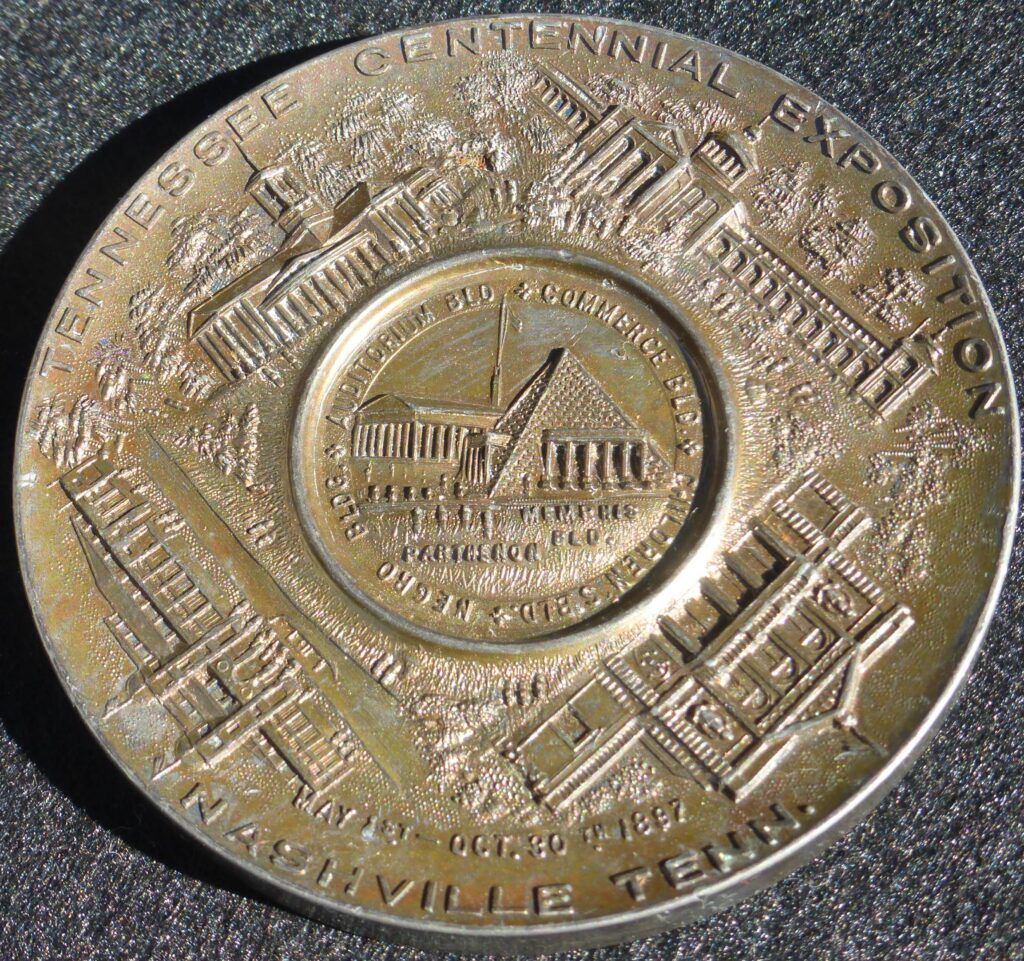
Great information about the1897 Tennessee Centennial Exposition on the Tennessee Virtual Achieve
Tennessee Centennial Exposition Gold Medal (1897)-https://volopedia.lib.utk.edu/entries/tennessee-centennial-exposition-gold-medal-1897/
